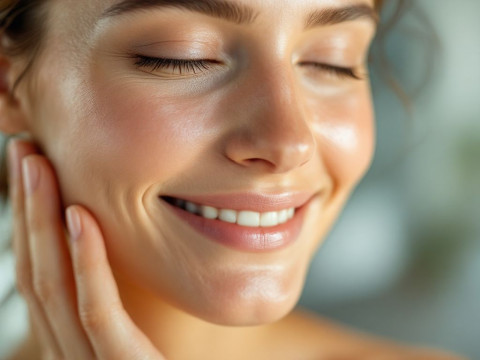Hey there, sunshine lovers! Let’s talk about something that we often forget while enjoying the golden sands and crashing waves—our hair. You spend hours picking the perfect swimsuit, lathering on sunscreen, and sipping iced beverages, but what about your hair? Trust me, your locks need just as much attention, especially when it comes to beach hair protection. If you’ve ever returned from a day at the beach with a tangled mess of sand, salt, and sun damage, you’re not alone. Let me guide you through some easy, effective steps to make sure your beach days don’t end with a hair disaster.
Why Beach Hair Protection Matters
Picture this: you’re lounging by the sea, feeling the light breeze through your hair, but what feels good in the moment often turns into a hair hangover later. Saltwater and sun are a volatile mix; they can strip moisture, leaving hair frizzy and straw-like. Sun might provide your skin a vitamin-filled glow, but it’s not always kind to your hair. And don’t even get me started on those pesky tangles! Ensuring proper beach hair protection can prevent post-beach snarls and keep your hair healthy and shiny all summer long.
Prep Your Hair Before Stepping Out
Before hitting the beaches, give your hair some love. Dive into this quick hair prep, which is super easy and effective:
1. Hydrate, Hydrate, Hydrate
First off, hydration starts from within. Drink plenty of water to ensure your body—and hair—gets the necessary moisture.
2. Pre-beach Hair Protection Oil
Apply a rich oil or leave-in conditioner. Products with coconut, argan, or jojoba oil create a protective barrier against the elements, locking in moisture. Ever tried coconut oil? It’s like that friend who’s always got your back in heated situations—literally.

3. Braid it Up
Not just a fashion statement, braiding is actually practical. It reduces exposure to harsh sunrays and prevents major tangle incidents. Plus, those post-beach waves? Gorgeous!
4. Hat and Scarf Tactics
Sure, you want your beach style on point, but hats are more than accessories. They offer a shield against direct UV rays. Stylish wide-brim hats and light scarves offer extra protection without sacrificing your outfit.
5. Rinse with Fresh Water
Before you dive into those salty waves, rinse your hair with fresh water. Saturated hair absorbs less saltwater, a trick often used by regular beachgoers.
During Your Beach Day: Perfecting the Art of Chill
You’re out there listening to the ocean’s symphony, but keep a few things in mind during your beach play:
Protect and Reapply
Reapply leave-in conditioner or hair mist regularly, especially after a swim. Do it while chatting with friends to keep things casual and cool. Also, think about a sea salt hair spray for tousled waves. Use it sparingly though—too much, and it can dry things out.
Post-Beach Hair TLC
Once your toes leave the sand, it’s time to jump towards recovery mode.

1. Thorough Rinse
The first thing, and I can’t stress this enough, is to rinse all that salt out. Salt water hair might sound exotic, but left unchecked, it’ll feel like trying to comb through straw.
2. Shampoo Carefully
Look for sulfate-free shampoos; these are gentler and won’t strip your natural oils. Tender love and care—start conditioning from your roots!
3. Deep Conditioning Treatment
After a long beach day, your hair needs a consistency check. Deep conditioning treatments are fantastic for restoring lost moisture. Imagine this as the hair equivalent of your post-beach glass of vino.
4. Trim Regularly
This may sound cliché, but regular trims can keep those sun-frazzled ends in check. While the sun brings joy, it can turn ends dry and crispy.
Summer Must-haves for Hair Care
Now, let’s sift through your summer hair care toolkit. A lineup of must-have items ensures your hair’s ready for anything the beach throws at it.
- Protective Hair Oil
- The MVP of your summer game. Both pre and post-beach, this hardworking oil keeps moisture locked in.
- Deep Conditioner or Hair Mask
- For extra hydration when showering doesn’t quite do the trick.
- Texturizing Sea Salt Spray
- Fulfills that desire for effortless waves, adding character and style.
- Wide-tooth Comb
- Trust me, navigating post-beach mane with a normal brush isn’t fun. This comb helps keep breakage at bay while de-tangling.
- 5. **Silk or Satin Scrunchie
- Gentle on your locks, keeps everything secured without the pulling.
- 6. **Hat or Light Scarf
- Protection against the sun when things hit ultraviolet extremes.
Mistakes to Avoid

Ah, we all slip up sometimes. Keep these common trip-ups on your radar:
- Forgetting to Rinse: Letting that ocean residue hang out in your hair can be disastrous.
- Overwashing: Counterintuitively, too much scrubbing can strip your scalp, leaving it vulnerable.
- Skipping Heat Protection: Natural elements cause enough damage, don’t add styling tools without protection.
Final Thoughts: Embrace Your Summer Hair with Confidence
Remember, beach days are supposed to be fun! By weaving these simple habits into your routine, you’ll ensure that your hair remains as picture-perfect as the sunset over the waves. Will there be days where things don’t go as planned? Sure, but half the fun is figuring it out. Armed with this specialized guide to beach hair care, you’ll navigate summer days with ease, leaving you more time to focus on what’s important: enjoying every single second of that salty ocean air. So pack up your beach bag—you’re ready for a hair-friendly adventure!
Frequently Asked Questions
How often should I wash my face mask to prevent maskne?
To prevent maskne, it is crucial to wash your face mask regularly. For fabric masks, wash them after every use, similar to how you would wash your underwear[2][3][4]. Disposable masks should be tossed after each use to prevent the buildup of bacteria and other contaminants[3][5>.
What type of skincare products are best for preventing maskne?
For preventing maskne, use skincare products that are oil-free or noncomedogenic. These products, such as gentle cleansers, moisturizers, and sunscreens, help prevent clogged pores and reduce the risk of acne. Look for products containing salicylic acid or benzoyl peroxide for their acne-fighting properties[1][3][4>.
How can I reduce friction and irritation caused by wearing a face mask?
To reduce friction and irritation, choose a mask that fits well and is made from breathable fabrics like cotton or bamboo. Loosen the mask straps, use pads under the straps, or consider a headband-style mask to minimize friction. Taking brief breaks to remove the mask and allow your skin to breathe can also help[2][3][5>.
What are some additional tips to prevent maskne while wearing a face mask?
In addition to regular mask washing and using the right skincare products, avoid touching your face, skip makeup or use noncomedogenic makeup, and moisturize your skin to keep it hydrated. Also, limit the use of active ingredients like retinol or benzoyl peroxide during the day when wearing a mask, and consider using a topical antimicrobial cream to prevent bacterial buildup[1][3][4>.
References










